Everything You Need to Know About the Ironman 70.3 Oceanside Course

(Photo: Donald Miralle/Getty Images)
Table of Contents
Steeped in the history of triathlon, great athletes, and a longtime presence in the community, Oceanside always gives triathletes a warm welcome to California. Historically, Ironman 70.3 Oceanside marks the unofficial start to the racing season in North America.
This race is one of my very favorites, with a transition area on the Oceanside Pier, a unique course that goes through a Marine Corps base, and unparalleled crowd support. This guide will walk you through everything you need to know about the Ironman 70.3 Oceanside course so you can have a great race day.
Ironman 70.3 Oceanside will be streamed live for free on Outside Watch, beginning at 6:30 a.m. PT/9:30 a.m. ET Saturday, April 5. The broadcast will be available on-demand after the finish to all Outside+ members. Become an Outside+ member today and get access to the full streaming library of 70.3 racing any time, on any device.
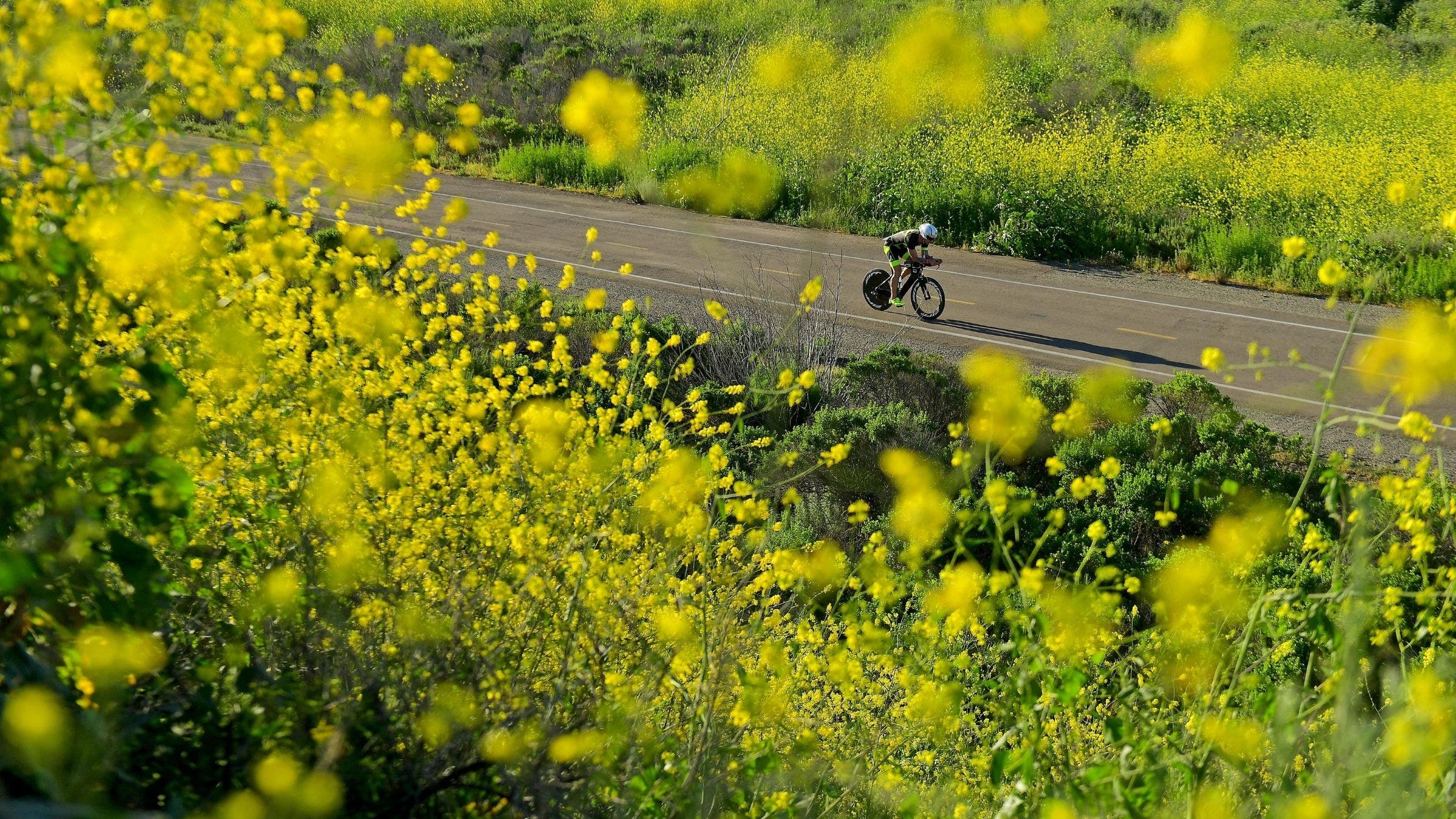
Ironman 70.3 Oceanside Weather
Southern California in the early springtime has pretty predictable weather. It can be cold in the morning but usually once the sun rises, the temperatures are perfect for racing; think a bit chilly to stand around but at race effort, it is actually ideal. For training in the days leading up to Ironman 70.3 Oceanside, I’m usually OK with shorts and a long sleeve or light jacket.
Just to be on the safe side, however, pack sweatpants, a warm jacket, hat, and gloves to wear in transition before the race. Sometimes pre-race jitters (yes, I definitely get them and probably always will) can keep you warm, but if you have the right clothes, it will make it so you can save your energy until after the starting gun goes off.
Oceanside often starts out on the colder side during the swim, then warms up by the run. The conditions can vary, however: I have been absolutely freezing on the bike some years, but usually I’m just a little cold early in the ride. That’s because the marine layer (otherwise known as a “cold light rain”) can make any exposed skin feel cold. With that said, a tight cycling vest, shoe covers, and gloves will usually be enough to keep you comfortable on the bike in the event of a cold front.
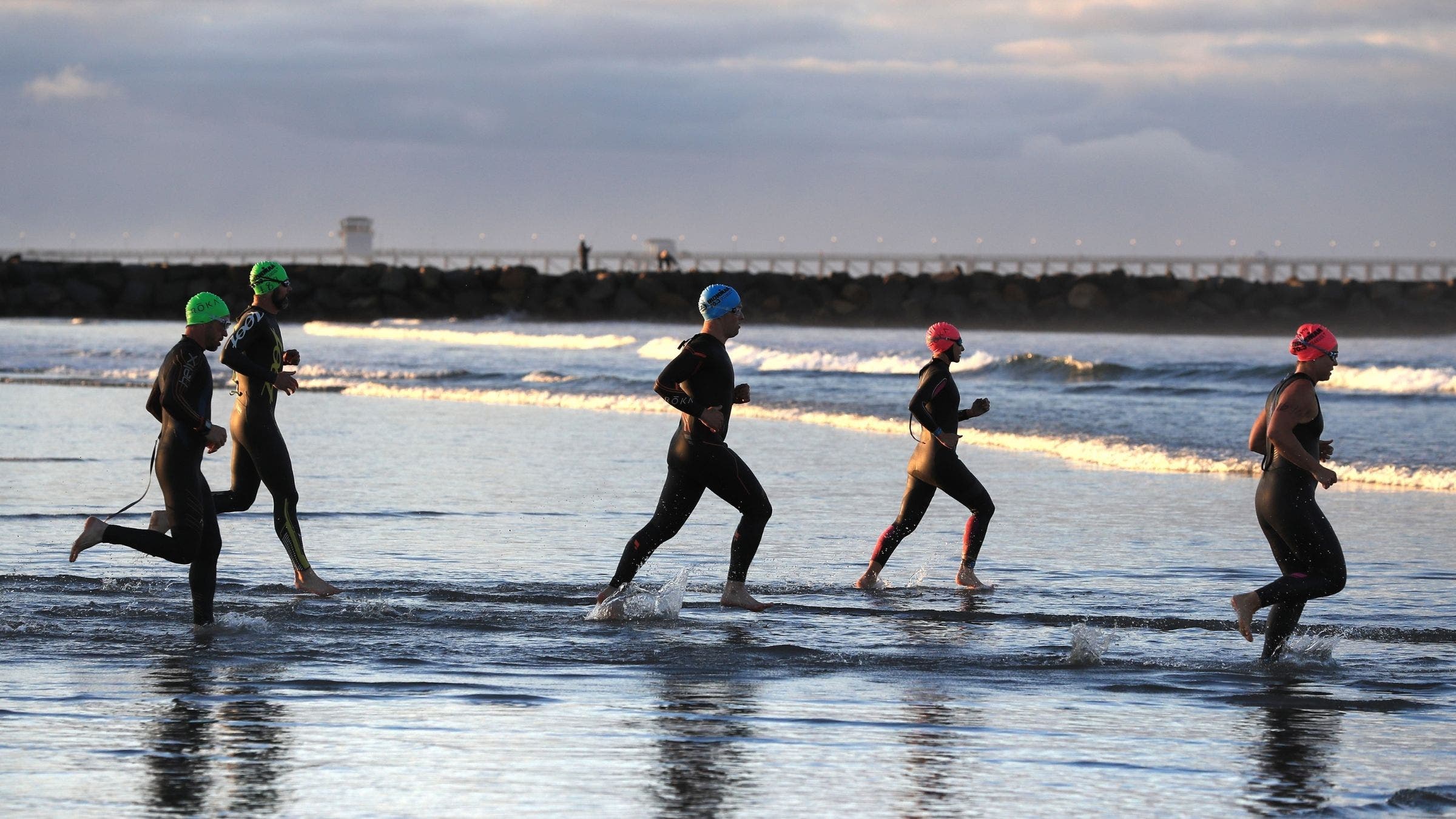
Ironman 70.3 Oceanside Swim Course
Since the harbor where the race takes place has boat traffic, athletes are not allowed to pre-swim the entire course. However, you are able to swim the beginning/outbound portion of the course—if you decide to do this, try to time it with the swim start time of day to give yourself the most realistic mental and physical preparation.
The swim course wraps clockwise around Oceanside Harbor, with the navigational buoys to your right. After entering from the beach in a rolling start, athletes will swim through the waves to the first turn buoy, where they’ll navigate north. After passing the harbor entrance, athletes will turn again, this time to swim toward the fishing pier before turning to face east. Because of this position, the sun will be in your eyes. After exiting the water at the boat launch, athletes will run to transition. The water can, at times, be choppy when starting on the beach side, but calmer by the time you enter the harbor area.
As for the water temps and clarity, expect the water to be cold but tolerable, and the visibility to be fair. You won’t see much, if anything, but while sighting, the buoys will be lit nicely on the outbound leg. The buoys have a tendency to “hide” on the inbound portion because of the position of the sun.
Gear
Progressive tint goggles are great for the varying sun conditions you’ll encounter on the swim The early morning temperatures combining with the marine layer will undoubtedly add to a colder start to the race. Wetsuits are a must, and neoprene skull caps are also an option for those looking for a bit more insulation.
RELATED: Ask a Gear Guru: Which Type of Goggles Should I Wear Today?
Andy’s advice
The swim will be cold but tolerable. Wear a wetsuit and practice sighting before race day. Also, if you are lucky enough to hear a few barks in T1, they aren’t from family dogs—they are from the seals in the harbor. Be sure to bark a “hello” back to them!
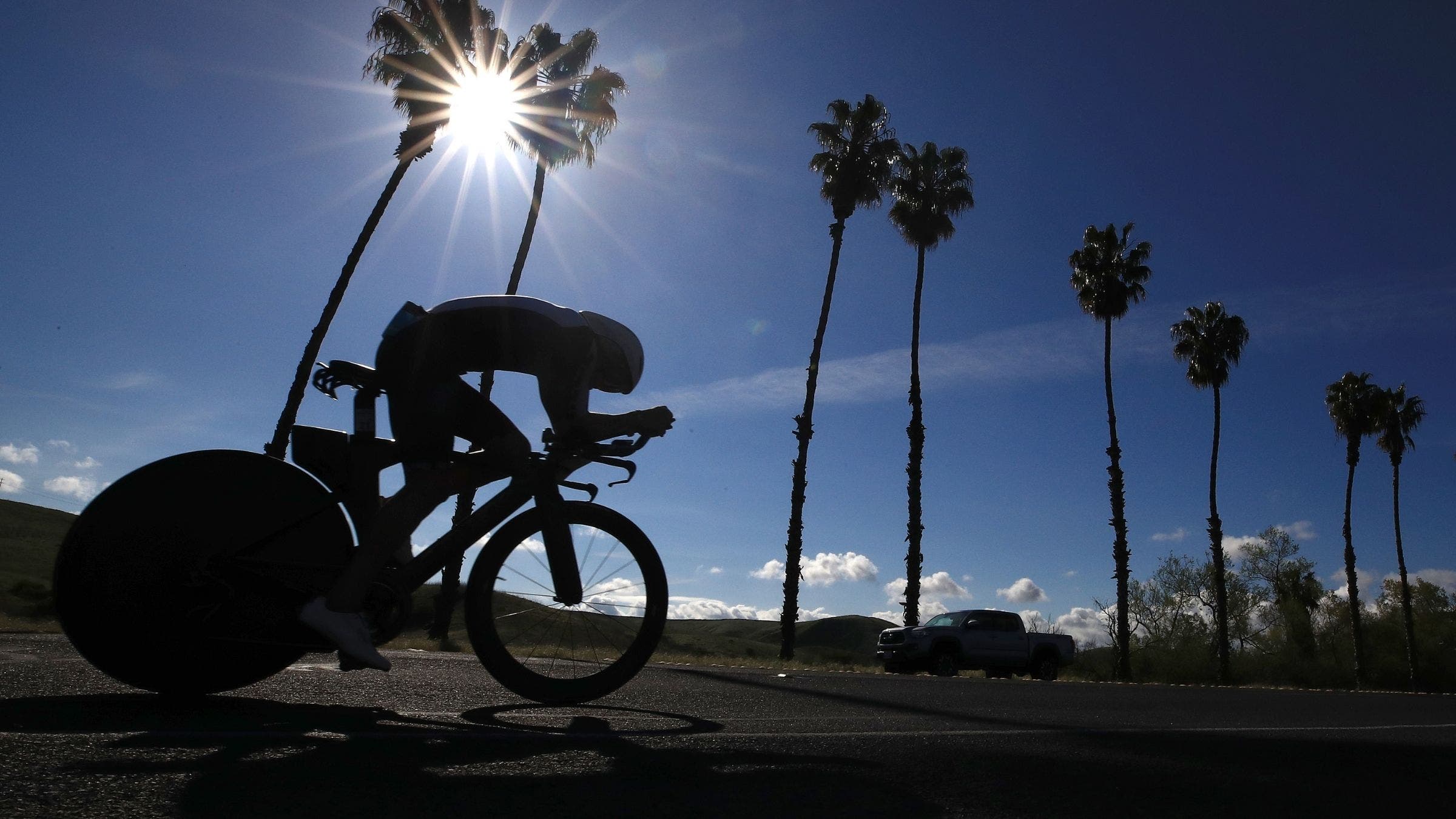
Ironman 70.3 Oceanside Bike Course
One of the nice things about the varied terrain at 70.3 Oceanside is that there is something for every skill on this ride—aero, climbing, handling, and overall racing.
Old Pacific Coast Highway
Make sure you are strapped into your shoes and clipped into your pedals before you exit the marina; you’re going to get to work right away on this bike course.
There is a short but noticeable hill just before the first mile. Once you crest this, expect more of the same for the first 20 miles. The small, but noticeable uphill gradient from T1 all along the Old Pacific Coast Highway requires patience and pacing. You don’t want to burn your matches before you get to the bigger climbs later in the course!
On this section, the road conditions will require some vigilance. There are potholes behind the PX, as well as a few under the pedestrian bridge just before you head north on the strand. Because of this, I recommend you use rubber bands and/or electrical tape to secure your bike bottles. Also, pay attention to caution tape on the roads indicating holes, debris, or bumps. Sometimes, we racers surprise the early morning surfers, and the course isn’t 100% traffic-free, so always stay alert while racing.
Camp Pendleton
Camp Pendleton is usually restricted to cyclists during the year, so it is a rare treat to get to ride on their roads. Note that because of these restrictions, athletes can’t pre-ride the course through Pendleton; you’ll have to wait until race day to experience it for yourself!
This is the section of the course with the most significant climbs on the course. The two hills in Camp Pendleton are steady all the way through, so don’t over-ride the first third of each hill. Instead, keep your effort consistent, as it will help you keep some juice in your legs for later in the run.
RELATED: How to Climb Every Hill
One of the fun parts of hitting the aid stations in Camp Pendleton is that they are sometimes manned by our Marines, and they are fired tup o serve and help you on your day. Don’t be surprised if their cheers are punctuated by gunshots or cannon fire—the Marines not at the aid stations may be conducting target practice on the backside of Camp Pendleton (not at the athletes, I promise).
The final stretch
After you exit Camp Pendleton, you may be feeling revved up and ready to speed back to T2. A steep descent will add to this need for speed. But before you punch it, pay attention: there is a strict no passing and no speeding zone on Basilone Road, where the speed limit is 25 miles per hour and speed trailers are used for compliance. If you go over the speed limit, you will be disqualified.
In the final miles heading back to transition, you’ll have a nice flat section, which provides a perfect opportunity to get into aero position and take in some nutrition before the run.
RELATED: A Half-Ironman (70.3) Nutrition Plan
Gear
If you are planning on adding a vest or gloves for your ride, be sure to initiate the zipper on your vest/jacket as well as strapping on your gloves before you mount (you can thank me later, especially if we have a heavy marine later that makes the riding extra chilly).
I would suggest having an 11/25 or an 11/28 on your cassette for the hills on the course. Although most of your day will be spent in the big ring, you will need a few extra cogs to get up the climbs.
Wheel set up can be varied, but a deep rim or disc rear wheel and any depth front wheel ride well on this course.
RELATED: Understanding Wheel Rim Depth for Triathletes
Andy’s Advice
Since this course offers a little bit of everything; hills, flats, rough roads, smooth roads, a few sharp corners and 180s, I would recommend deep rim wheels on both the front and rear. My exception would be if you are a great cyclist, then you should race on your disc wheel!
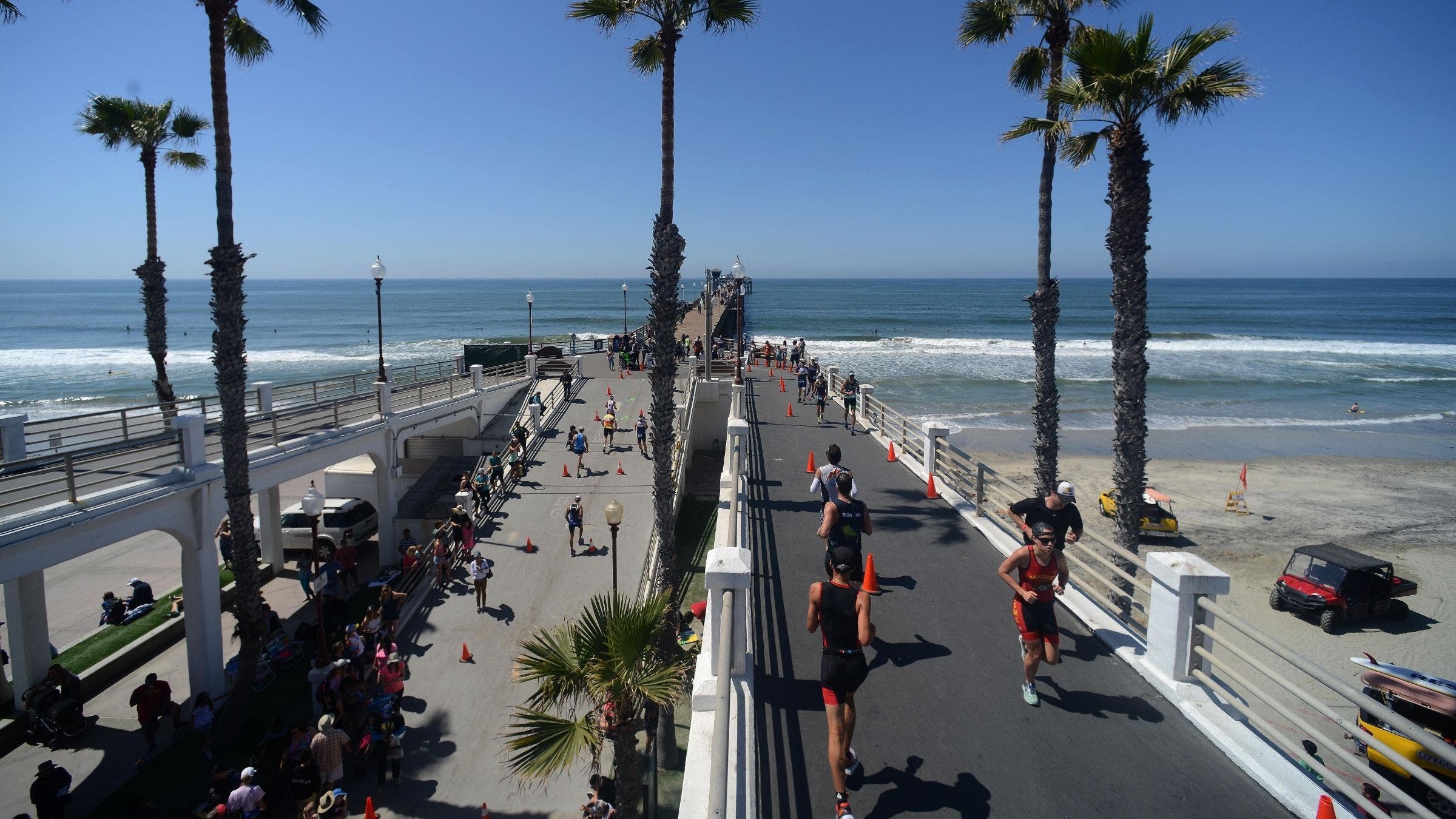
Ironman 70.3 Oceanside Run Course
The Ironman 70.3 Oceanside run is one of my favorites, as it brings you past enthusiastic fans early and often. It’s great to feel their energy! As a pro, one of the best parts of this run course is getting to run with all of the age-group athletes while they are on lap one and I’m on lap two (the healthy head start you generously give me definitely plays a role in getting a lead!).
The Loops
The run course begins at transition above the Oceanside Pier, descends to the harbor before proceeding on the world-famous beachfront Strand and through coastal neighborhoods. This is a two-loop course, so athletes will retrace their steps before proceeding to the finish.
You can break down the course into four sections of two out-and-backs. If you can descend each leg, you will find yourself with a run PR!
The Hills
Don’t be fooled by the notion that the run is right next to the Pacific Ocean. The course isn’t flat, and there are some good little hills that will keep you honest sprinkled throughout. The most noticeable inclines will be up and down the Oceanside Pier walkway, onto and off of The Strand, and in the neighborhood as well.
RELATED: How to Run Smarter in Hilly Races
Gear
The concrete on The Strand makes for a smooth, fast run that will leave its mark on your bones afterward. If you have a beefier but still-fast shoe, this is your chance to race in them. I would also recommend a little sunscreen on your neck and shoulders as well, since the run is exposed and the sun is usually shining by the time we are all on our feet.
Andy’s Advice
Try not to carry too much nutrition, as the aid stations are well-placed and usually well-staffed. However, if you have a go-to nutrition, you can carry a small flask out of T2. I will have my own Infinit blend waiting for me after the bike, so my body can race off of what it trains on. But one less thing to change on race day can help reduce the stress of the effort of racing.
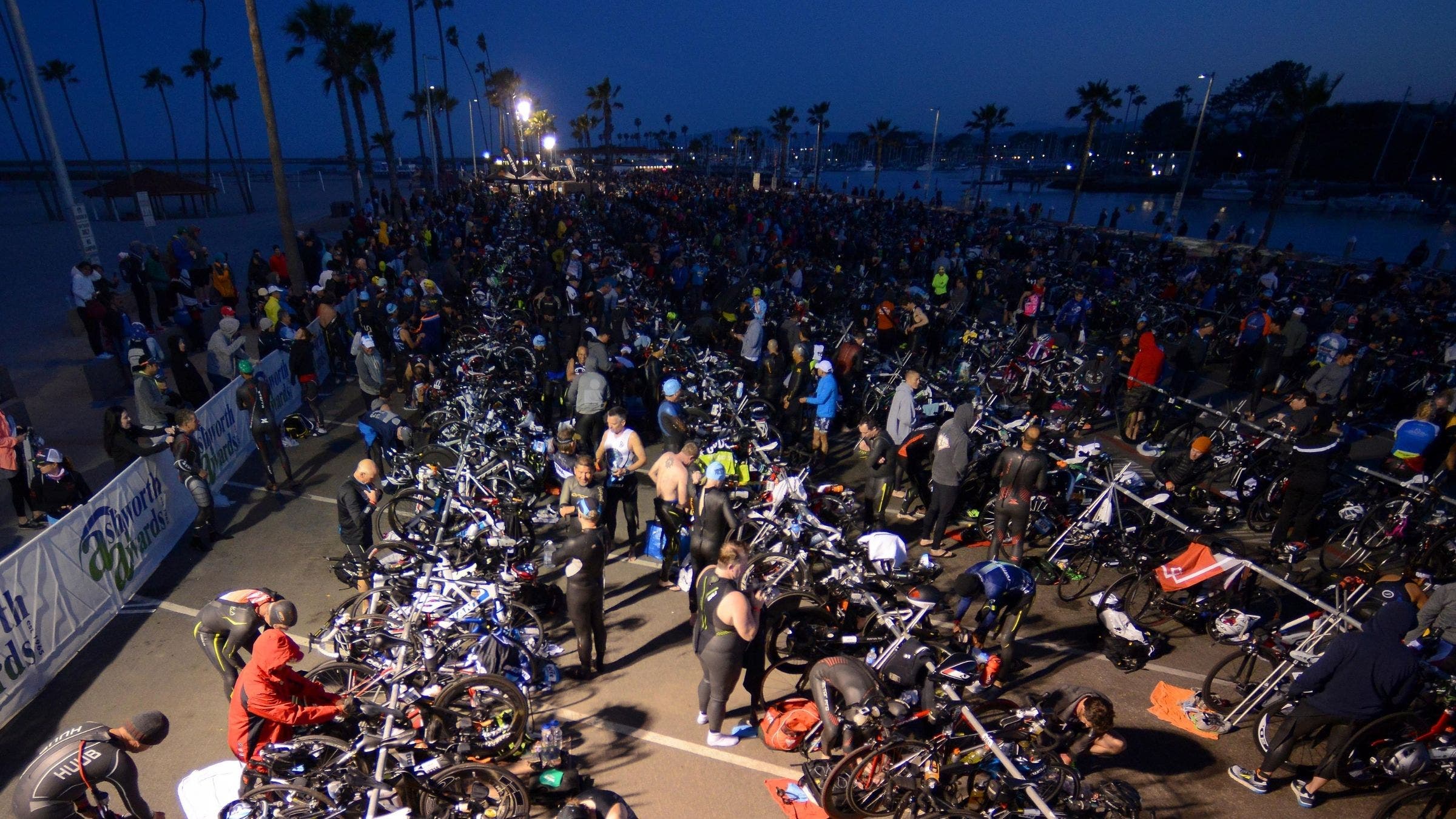
Ironman 70.3 Oceanside Logistics
Race Morning
The transition is located at a great spot on the pier. However, since it is at the end of a road, there is a natural bottleneck when it comes to checking in your bike and again on race morning. Allow for just a little extra time so you aren’t rushed on race day. You’ve spent so much time preparing for your day, an extra 10-15 minute cushion in the morning is well worth avoiding the unnecessary anxiety.
Additionally, make sure you pay attention to your surroundings in transition. There are tons of racks, bikes, and people to navigate while in T1. Make a few mental notes, both the day before when racking your bike and the morning of, so you can race right to your number and be as efficient as possible transitioning from the swim to the bike.
RELATED: Doing Your First Triathlon This Year? How to Handle Transitions Like a Pro
Pre-Race Preparations
If you prefer to swim in a pool pre-race, there are a few options around Oceanside & Carlsbad, including El Corazon Aquatics Center and the Brooks Street Swim Center. It’s recommended you check/call ahead with any and all options prior to swimming to make sure they are allowing non-members to swim.
Local Bike Shops and Running Stores
If you need any pre-race help setting up your bike or you forgot a key piece of equipment, local tri shop PlayTri Oceanside will have you covered for all things triathlon. There will also be some vendors at the pre-race expo.
Spectators
During the swim, there’s a prime viewing position at the north end of transition, near the Harbor Pelican Deli Mart. It’s best to stick around the transition area during the bike as well, since the majority of the bike course on Camp Pendleton is closed to spectators for safety reasons. After seeing your athlete head out on the bike, grab a cup of coffee or breakfast at a restaurant near transition – by the time you finish your order, it will be time to cheer your athlete on during the run!
During the final leg of the race, most spectators decide to stick close to the finish line and the adjacent Strand, as it is the best place to catch all the action on the run.
Post-Race
Eat + Drink
There are no shortage of great spots to celebrate your race in Oceanside. My go-to post race meal is usually fish tacos, and you can’t go wrong with any of the joints along The Strand!
The Pizza Port Brewing Company is widely considered the most popular place for a pizza and beer. Pannikin Coffee and Tea is a bit further south but has unforgettable pastries and coffee.
Sightsee
Though some athletes like to head home immediately after the race, I encourage you to stick around. If you have the chance to watch the sunset on the Oceanside Pier, I promise you won’t regret it.
Oceanside is also a great place for a post-race vacation with your family. In addition to spending quality time on the beach, Oceanside offers a variety of family-friendly activities, including whale watching, the California Surf Museum, and exploring the Buena Vista Audubon Society.
Olympian and World Champion Andy Potts has won Ironman 70.3 Oceanside 5 times and been runner-up 4 times over his storied career.